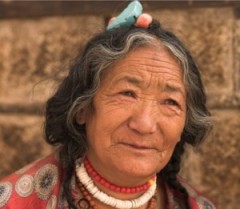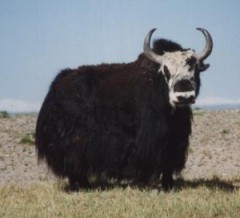Brief Introduction to Lhasa-Holy City
Lhasa, located on the north bank of the Lhasa River, is the capital of the Tibetan Autonomous Region of the P.R.C. The average altitude is 3648 meters (11,969 feet), and the average yearly temperature is 8.5 C (47.3 F). With 3021 hours of sunshine a year, Lhasa is often called the “Sunshine City”. In the 7th century, the Tibetan King Songtsan Gampo established Lhasa as the capitol of his Kingdom. Lhasa has ever served as the center of Tibetan politics, economics, culture, and religion. There are 120,000 inhabitants living in an area of 441 square km in the city and 7 surrounding counties. In1982 Lhasa was declared one of the first historical famous cities by the nation. Presently, Lhasa is a convenient travel destination, with roads stretching to all directions and many domestic and international flights.
Religion
No other religion apart from Buddhism has been able to take root in Tibet. There is only a small Muslim population of about 2000 in Tibet, while there is no trace of Christianity at all. The Bon, the aboriginal Shamanistic Tibetan faith, had at one time prevailed, but lost ground as Buddhism flourished. Thus, Buddhism can as well be said to be the sole religion of Tibet, and the faith has taken so deep on root that it means almost everything to the Tibetans as already mentioned. Buddhism is the center of many Tibetans lives, and is sincerely venerated. Many well-to-do families have even built private chapels and prayer-rooms in their homes. The first Buddhist scripture printed in Sanskrit was said to have been descended from Heaven in the 5th century during the reign of 28th Tsanpo Tho-Tho-Ri Nyantsan. It was translated into Tibet in the 7th century during Songtsun Gampo's reign. This translation marks the beginning of Buddhism flourishing in Tibet. Later, when the India Master Padmasambhava travelled to Tibet, the spread of Buddhism accelerated and religious sects started taking shape. In the 11th century the visit of the Bengali Master, Atisha, to Tibet greatly encouraged the study of Buddhism. Finally, in the 15th century, Tsongkapa, the great reformer of Tibetan Buddhism, came to Tibet from Qinghai and founded the Gelupga sect (also known as the Yellow Hat sect), and hereafter Buddhism spread like wild fire into Tibet, becoming both a religious and political institution.
Today, after centuries of Buddhism being practiced on the Tibetan plateau, you can still witness first hand the flourishing of this beautiful and unique religious tradition.
Culture

The Tibetan people have a splendid and unique traditional culture. Each of its palaces and monasteries is a complex work of architecture, relished with beautiful handmade carvings, paintings, and sculptures. Each architectural work is also comprehensive work of art, and the contents of these artistic wonders also display the rich culture of Tibet. Some of he most noteworthy relics in them include the following:
1. Wonderful stone works of architecture in the Potala palace in Lhasa, the Kunbum Pagoda in Gyantse, and the great Assembly Halls in all of Tibet’s many monasteries.
2. Walls upon walls of paintings in the Jokhang Temple in Lhasa depicting the complete life-story of the Lord Buddha, breathtaking murals of mandalas painted on the walls of Sakya Monastery, and the art gallery in the Potala narrating the construction of this architectural wonder.
3. Innumerable works of sculpture such as images of gods, historical figures, and tomb stupas on display among which the giant bronze Maitreya Bodhisattva of Tashilunpo Monastery in Shigatse, which stands 26 meters (85.3 feet) in height and is said to be its biggest bronze image in the world.
4. The great translation work of the Buddhist Canon. Translation of the Commentaries are preserved in almost every monastery, amazing walls of scriptures composed of some 40,000 sutras in Sakya Monastery. The cultural significance of these sutras is expressed by the folk-saying: “though the outer walls built of stone may collapse, the inner walls built of scriptures can withstand in the stead.” All these splendid cultural relics and attractions take us far back into the wonder of antiquity and give us some idea of richness of Tibetan culture. |
